When it comes to building stable, long-lasting structures, the importance of a solid foundation cannot be overemphasized. An essential part of civil engineering, deep foundations reach underground to support structures in difficult soil conditions.
In this blog, we will discuss the particulars of deep foundations, looking at different kinds, pros and cons, typical uses, and the specialized equipment needed for installation.
Table of Contents
What is Deep Foundation?
Fundamentally, a deep foundation is a structural component that descends significantly below the surface of the earth to shift the weight of the structure onto deeper, more stable rock or soil layers.
Deep foundations anchor into stable strata, providing stability in circumstances where surface soils are inappropriate, in contrast to shallow foundations, which depend on the topsoil’s bearing capacity.
This technique becomes essential in urban areas or places with large amounts of soil because it enables engineers to construct safe structures even in the face of difficult ground circumstances. It also emphasizes the importance of professional excavation before digging.

6 Types of Deep Foundation Construction
There are 6 types of deep foundations used in construction. Let’s walk through each of these in detail:
Basements
Basements are used as additional usable space in addition to being a foundation. A basement is a space below ground level that is typically found in residential or commercial buildings. The area is created by excavating soil.
Basements offer stability and versatility in building design because they are reinforced with walls and floors.
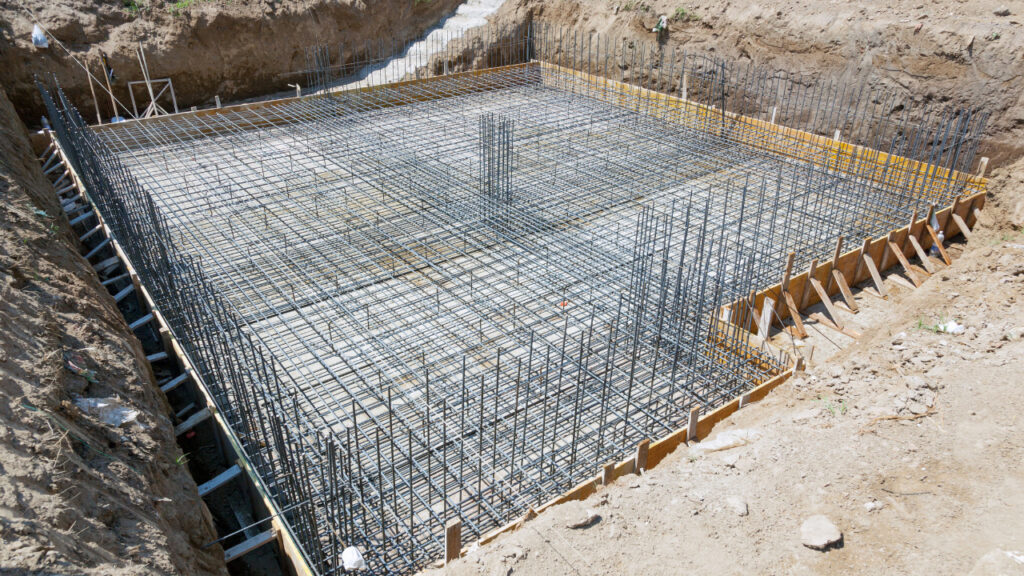
Buoyancy Rafts
Hollow box foundations, sometimes referred to as buoyancy rafts, are used when structures need to be supported on soft or wet soil. These foundations are made of hollow boxes that move soil, providing stability and buoyancy. They are especially helpful in places with high water tables or along the coast.
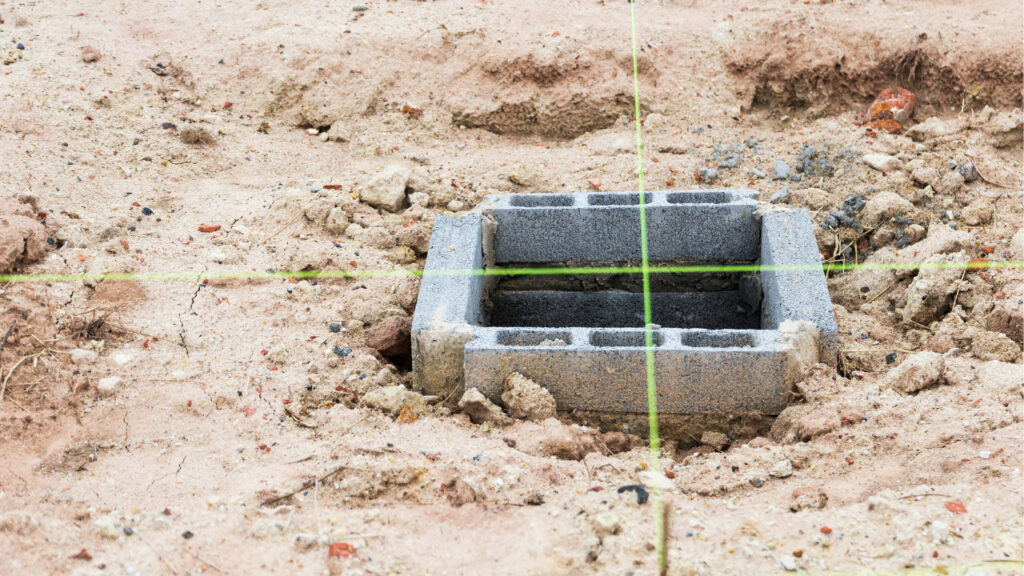
Caissons
Caissons are big, waterproof buildings that are used below the waterline to provide a dry working environment.
Caissons are frequently used in bridge construction, where they are installed through a procedure known as dredging. They form vital support structures that are resilient to the difficulties presented by aquatic environments.

Cylinders
Similar to caissons, cylindrical foundations are employed in difficult soil situations, especially in marine construction.
Bridges, piers, and other waterfront structures are supported and stabilized by these structures. Their efficient soil penetration is made possible by their cylindrical shape.
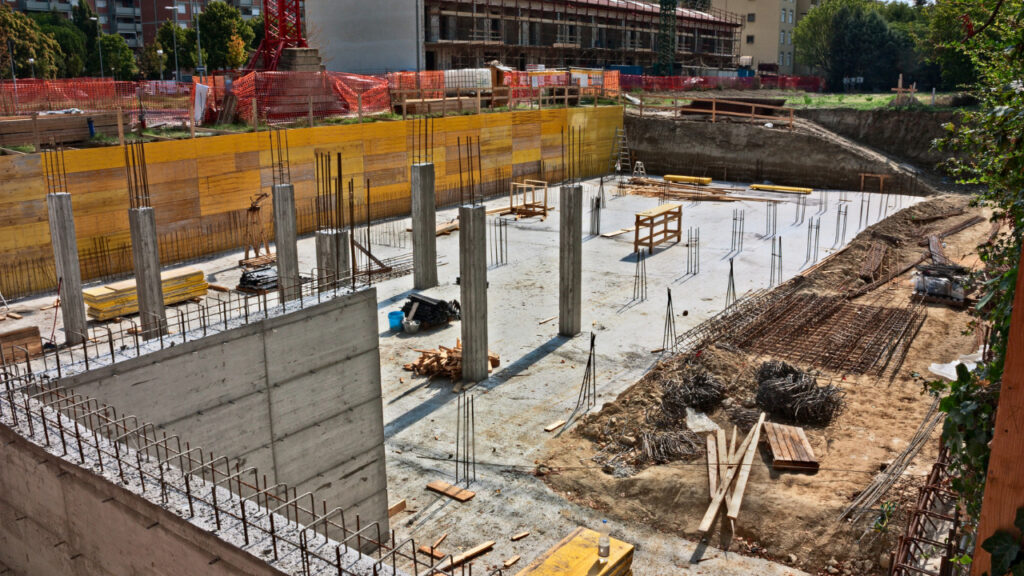
Shaft Foundations
Excavating a vertical shaft and fortifying it with steel or concrete constitutes a shaft foundation.
For high-rise buildings or other structures where conventional foundations might not be adequate, these foundations are a good fit. By equally distributing the load, shaft foundations stop excessive settlement.
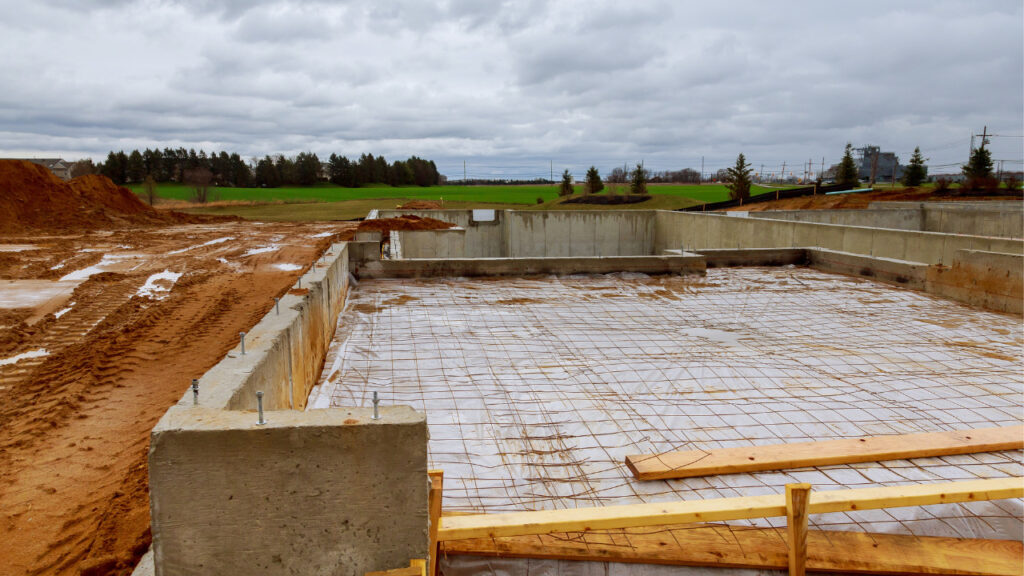
Pile Foundations
One of the most popular kinds of foundations is the pile foundation, which involves driving piles – vertical structural components – deep into the ground. Steel, concrete, or wood are some of the materials that can be used to make piles, depending on the needs for load and the state of the soil.
Pile foundations are a flexible and efficient way to move weights to more stable, deeper rock or soil.
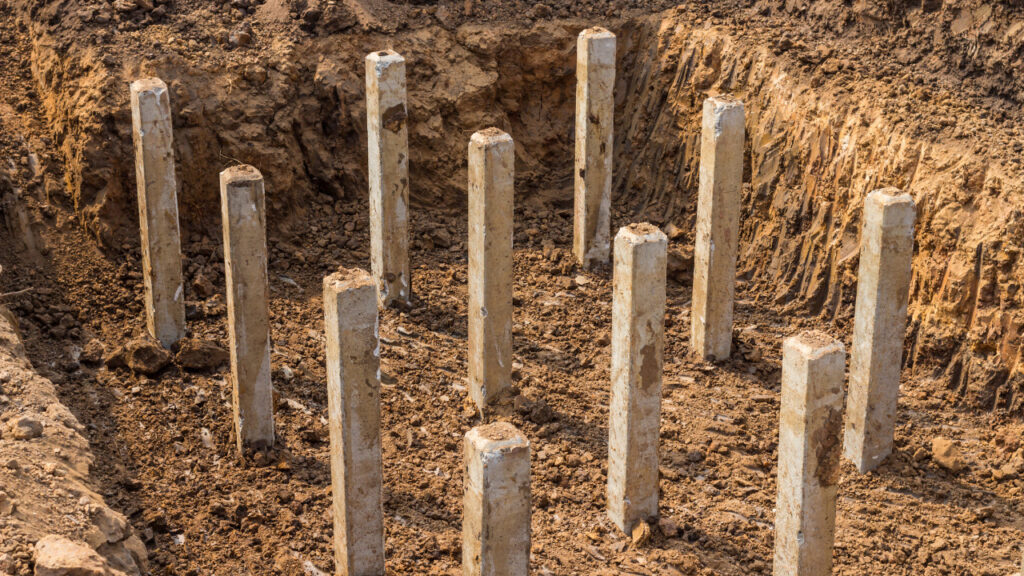
Pros of Deep Foundation
Let’s understand why deep foundations can serve a building right by looking at the pros:
Deep Foundation Provides Stability
Deep foundations provide superior stability, particularly in areas with variable or weak soil conditions. These foundations offer a stable base for buildings by delving into stronger, deeper layers, which lowers the possibility of settlement or structural failure.
Deep Foundation has Increased Load Capacity
In comparison to shallow foundations, deep foundations can support larger loads. Because of this, they are necessary for supporting big structures like skyscrapers and bridges, where the distribution of weight plays a crucial role.
Deep Foundation is Suitable for Challenging Soil Conditions
Deep foundations offer a dependable solution in areas with expansive soil, high water tables, or liquefaction-prone areas. By anchoring into stable layers, they lessen the negative effects of unfavorable soil conditions on the integrity of the structure.
Cons of Deep Foundation
Like everything else, deep foundations may pose some drawbacks as well, such as:
Deep Foundation Can Have a Cost
Because deep foundations require specialized tools and materials, their installation is frequently more expensive than that of shallow foundations. The entire cost is influenced by the excavation procedure and the requirement for skilled labor.
Digging a Deep Foundation is Time-Consuming
Installing deep foundations can be a labor-intensive process. On the other hand, the installation of shallow foundations is relatively faster than excavation, reinforcement, and construction below ground level.
Deep Foundation Can Impact the Environment
Compared to shallow foundation techniques, deep foundation construction might have a more noticeable environmental impact. Groundwater and the surrounding ecosystem may be impacted by the use of large machinery and the disturbance of deeper soil layers.
3 Uses of Deep Foundation
Deep foundation is effective in the following instances:
Skyscrapers

Deep foundations are often necessary for the tall buildings that characterize urban skylines to maintain stability under the enormous vertical load. When building skyscrapers in densely populated areas with varying soil conditions, deep foundations become essential.
Bridges and Overpasses
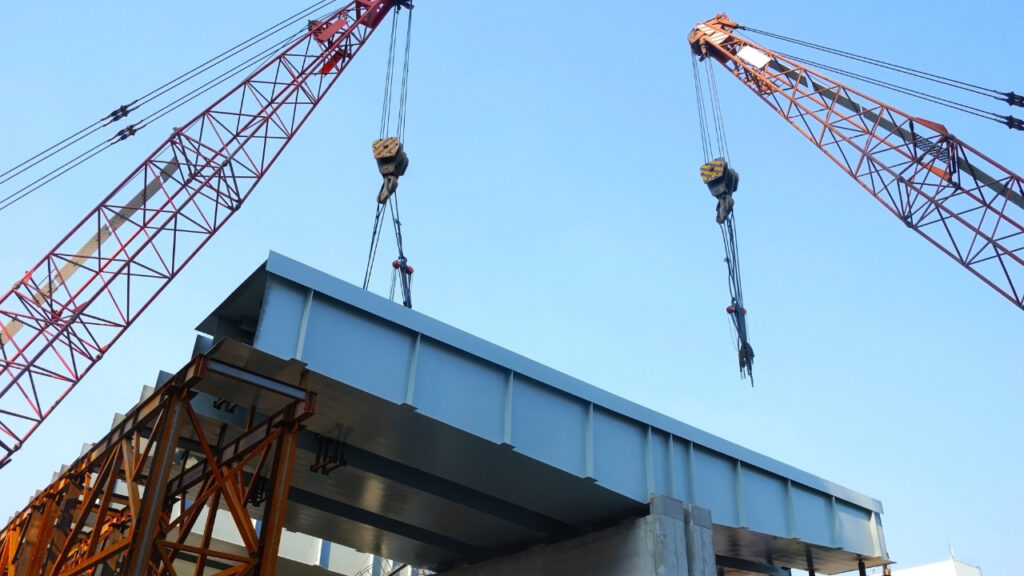
Deep foundations are essential for supporting large loads and guaranteeing the stability of these essential transportation structures when building bridges and overpasses. In particular, pile foundations are frequently employed in bridge building.
Coastal Structures

Deep foundations, such as caissons and cylinders, give structures near bodies of water or coastlines the stability they need to withstand the dynamic forces present in marine environments.
4 Types of Equipment Used in Deep Foundations
There are four types of equipment used in the deep foundation, including:
Pile Drivers
Specialized equipment called pile drivers is used to drive piles into the ground. They are available in different varieties, each suitable for a particular type of soil, such as vibratory drivers, diesel hammers, and hydraulic hammers.
Excavators
When building a deep foundation, excavators are used in the excavation process. To make room for the caissons or piles that make up the foundation, they excavate and remove dirt.
Drilling Rigs
Drilling rigs are necessary for foundations that require drilling, like caissons and shaft foundations. They drilled holes in the earth for the foundation’s components.
Concrete Pumps
To supply and pour concrete into the foundation components, concrete pumps are used. They guarantee a methodical and effective procedure, particularly in projects requiring substantial amounts of concrete.
Final Thoughts on Deep Foundations
With their diverse types and applications, deep foundations provide an effective solution to the problems presented by a range of soil conditions. Deep foundations are essential for civil engineering because of their stability and load-bearing capacity, despite some significant disadvantages related to cost and time. Deep foundations are still crucial in forming the built environment, even as our cities get taller and our infrastructure gets wider.





